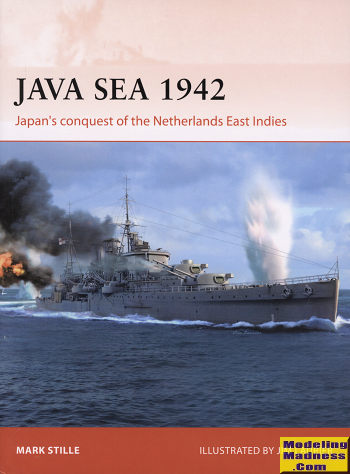 Those
who follow 20th century conflict will know that the war in the Pacific did not
go very well for the Allies in much of 1942. This was particularly true of
Southeast Asia. The Japanese picked a perfect time to strike. In many ways, they
had to. The US had cut off scrap steel and petroleum imports, which were needed
to keep the country going. This had them looking for other places to get this
material.
Those
who follow 20th century conflict will know that the war in the Pacific did not
go very well for the Allies in much of 1942. This was particularly true of
Southeast Asia. The Japanese picked a perfect time to strike. In many ways, they
had to. The US had cut off scrap steel and petroleum imports, which were needed
to keep the country going. This had them looking for other places to get this
material.
With the war in Europe going badly for the Allies, and
their Asian possessions poorly defended, it seemed like the time to strike. At
the very start the USN and Japanese Navy were fairly evenly matched. The IJN
could also best anything currently in the area from the British, Dutch or
Australians as well. So strike they did.
One of the prizes was the oil production facilities and
the oil fields of the Netherlands East Indies. So in early 1942, troops were
sent to take over the Dutch and Australian possessions in the southwest Pacific.
By this time the US was holed up at Bataan in the
Philippines, Burma was being over run and Singapore and Hong Kong had fallen. In
the entire area, the Allied fleet (as it were) was basically a few cruisers and
a few more destroyers. Many of these were Dutch with the British only providing
a few ships. Several US cruisers were fairly modern, but all the destroyers were
WWI vintage ships.
There were several battles in the Java Sea surrounds;
Balikpapan, Badoeng Strait, Java Sea, and Sunda Strait. The only one was was
somewhat successful for the Allies was Balikpapan with the others being
victories for the Japanese. There were a number of reasons for this. One is that
the Japanese were already battle hardened and very well trained. Another is that
they had excellent torpedoes (though those were not much of a factor considering
the number shot and the few hits that were obtained). Finally, Allied command
and control was very poor. The four warring nations decided to combine their
forces under a Dutch admiral, who was basically not qualified to run the fleet.
Errors on both the Allied and Japanese side often determined how well the
battles were fought. There was also the fact that the Allies had no
reinforcements, where that wasn't the case for the Japanese.
All of these factors are superbly covered by the author
who looks at the situation prior to hostilities and the outcome of the various
battles. These all fed on each other to end up with a decimation of Allied sea
power in the area and the ability of the Japanese to not only take over the
region, but also hold it until the very end of the war. It is a great book that
is well researched. It contains some superb art work and a lot of period photos.
This all provides the reader with a book that is both fascinating to read and
one that offers some insight into the events. Well worth picking up.
October 2019
Copyright ModelingMadness.com. All rights reserved.
For more on the complete line of Osprey books,
visit www.ospreypublishing.com .
If you would like your product reviewed fairly and quickly, please
contact
me or see other details in the
Note to
Contributors.
 Those
who follow 20th century conflict will know that the war in the Pacific did not
go very well for the Allies in much of 1942. This was particularly true of
Southeast Asia. The Japanese picked a perfect time to strike. In many ways, they
had to. The US had cut off scrap steel and petroleum imports, which were needed
to keep the country going. This had them looking for other places to get this
material.
Those
who follow 20th century conflict will know that the war in the Pacific did not
go very well for the Allies in much of 1942. This was particularly true of
Southeast Asia. The Japanese picked a perfect time to strike. In many ways, they
had to. The US had cut off scrap steel and petroleum imports, which were needed
to keep the country going. This had them looking for other places to get this
material.